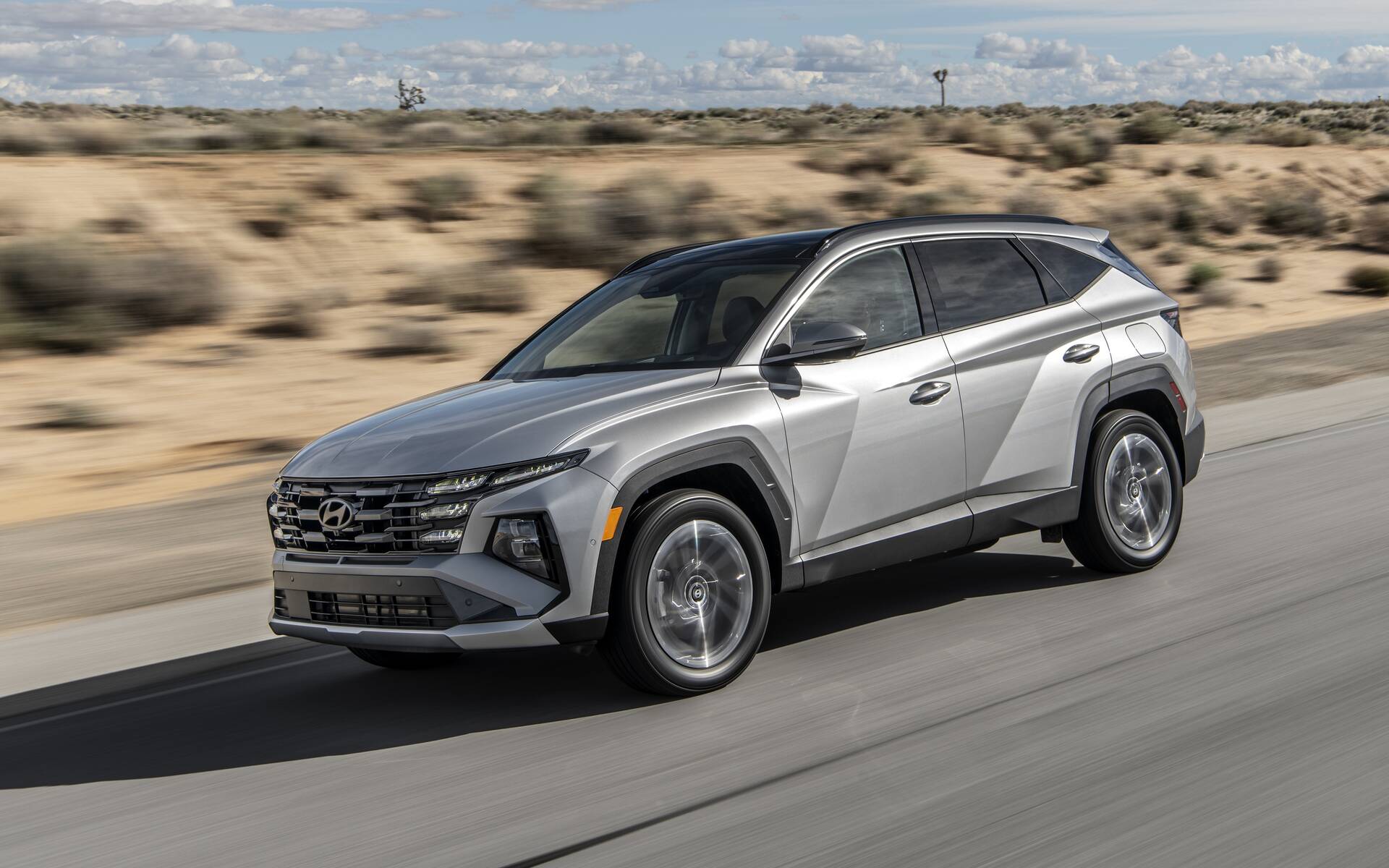2025 Hyundai Tucson Prices Go Up, Especially for the Hybrids


The Hyundai Tucson is the recipient of an extensive mid-cycle update for 2025, and you know what that means—higher prices. It’s really not that bad when it comes to gas-only models, but the two hybrid variants are significantly more expensive.
As a reminder, the popular compact crossover from South Korea sports a new front grille with larger openings and revised LED daytime running lights on each side. Throw in some redesigned front and rear bumpers along with new wheel designs, and you get a more rugged-looking exterior.
Read also
Following the lead of the brand new 2024 Santa Fe, the 2025 Tucson adds a more adventurous XRT model featuring bridge-type roof rails. Meanwhile, the 75 mm longer rear wiper blade will improve visibility anytime the weather gets bad.

The most significant evolution can be found inside. The entire dashboard and centre stack have been redesigned to bring them in line with Hyundai’s latest products such as the aforementioned Santa Fe and the Kona. The main highlight is the panoramic curved display combining two 12.3-inch displays (on select models) for the instruments and navigation.
The infotainment system features faster processing speeds, enhanced colours and sharper graphics along with more intuitive layouts for improved ease of use, while wireless Android Auto and Apple CarPlay connectivity now comes standard. Also, over-the-air software updates are available to keep the various vehicle systems fresh.

Drivers face a new steering wheel and a new shifter mounted on the steering column—again similar to a growing number of Hyundai models, a trend that started with the IONIQ 5 electric crossover. The control panel for the HVAC system is brand new, too, while freed up space on the centre console allowed designers to add a wireless smartphone charger, not to mention extra storage underneath.
New USB-C ports in the front row, available head-up display and acoustic glass in Ultimate trim are further enhancements to the cabin. On the safety front, the 2025 Tucson adds Forward Attention Warning, which utilizes an infrared camera mounted on the steering column to help track the driver’s eye gaze and monitor attention levels. If the driver is found to be unresponsive, the system can even help safely bring the vehicle to a stop.
How Much is the 2025 Hyundai Tucson?
The same three powertrain options return for 2025, starting with the naturally aspirated 2.5-litre four-cylinder engine producing 187 hp. By the way, all Tucson models in Canada continue to rely on Hyundai’s HTRAC all-wheel drive system as standard. A new My Drive mode is available.

The base Tucson Preferred carries an all-inclusive price of $37,181, a hike of just $300 from 2024. The Trend Package adds a panoramic sunroof, 18-inch wheels, a 12.3-inch LCD cluster, LED taillights, leatherette seating surfaces, an 8-way power-adjustable driver's seat, a proximity-activated power liftgate and a digital key, among other things. Because it offers more content than before, Hyundai has increased the price from $2,500 to $3,700.
The aforementioned new XRT model starts at $42,871. Beyond the unique, dark-looking exterior with raised roof rails, this one packs an eight-speaker Bose stereo, a 12.3-inch LCD cluster, leatherette seating surfaces, a digital key, a wireless smartphone charger, a power liftgate, 64-colour ambient lighting and more.
Next up, the Tucson N Line Hybrid is equipped with a turbocharged 1.6-litre engine and gets a slight boost from 226 hp to 231 hp thanks to a more powerful electric motor (47.7 kW instead of 44.2 kW). For 2025, it costs $45,871, an increase of $2,600. Hyundai is capitalizing on the fact that this model is much more efficient, more pleasant to drive and therefore highly coveted.

Finally, the top-line Tucson Ultimate Plug-in Hybrid goes from 261 hp up to 268 hp as a result of a more potent electric motor (72 kW instead of 67 kW). Drivers can now adjust the level of regenerative braking for improved comfort. The bad news is that you’ll have to spend an extra $3,200 due to an all-inclusive price that’s been revised to $49,871. This model is eligible to a $5,000 rebate under the federal government’s iZEV program, plus provincial incentives where applicable.








